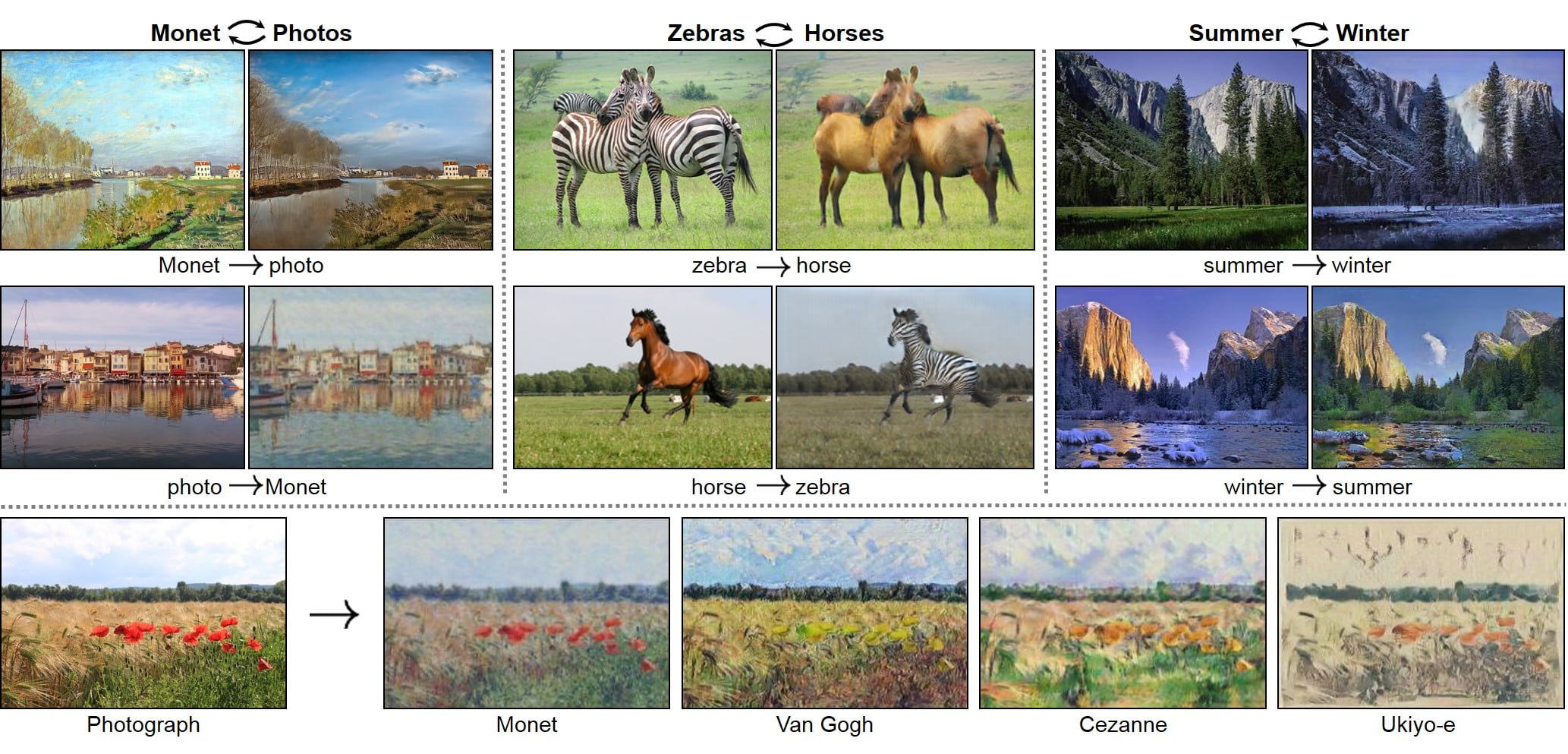CycleGAN, an abbreviation for “Cycle-Consistent Adversarial Networks,” is an image-to-image transfer technique developed by Jun-Yan Zhu, Taesung Park, Phillip Isola, and Alexei A. Efros. It was first presented in 2017 and is a type of generative adversarial network (GAN) designed to learn mappings from one image domain to another.
In a typical GAN, a generator network creates new images from a given input domain, for example, photographs of cats. But CycleGANs are different in that they don’t require paired images. This means that, instead of learning from a dataset of photos of cats and photos of dogs, the images can be unpaired. So, in this example, one part of the network might be trained on photographs of cats and the other part on drawings of cats.
The network is trained using a cycle-consistency loss, with both generators trying to approximate each other’s outputs. This cycle-consistency loss has two parts – one part ensures that an image of a cat should be converted back to the same image after going through the two networks, and the other part ensures that an image of a drawing should be converted back to the same image after going through the two networks.
The CycleGAN is particularly useful in problem spaces that have inbalanced classes such as night and day images, painting and photos, etc. This model is also used in tasks such as image-to-image translation and domain adaptation. It has even been used to generate new artistic styles of images called “super-resolution”, which can be used for tasks such as facial recognition and object detection.
CycleGANs have been shown to be particularly effective for numerous tasks such as unsupervised single image super-resolution, image colorization, image style transfer, video frame interpolation, aerial image synthesis, and image-to-image translation.
Ultimately, CycleGANs are a powerful tool for image-to-image translation, as they are unsupervised, require no pre-trained models, and are relatively fast when applied to different tasks. The primary limitation of CycleGANs is that they are not necessarily stable with regard to both image quality and speed.






